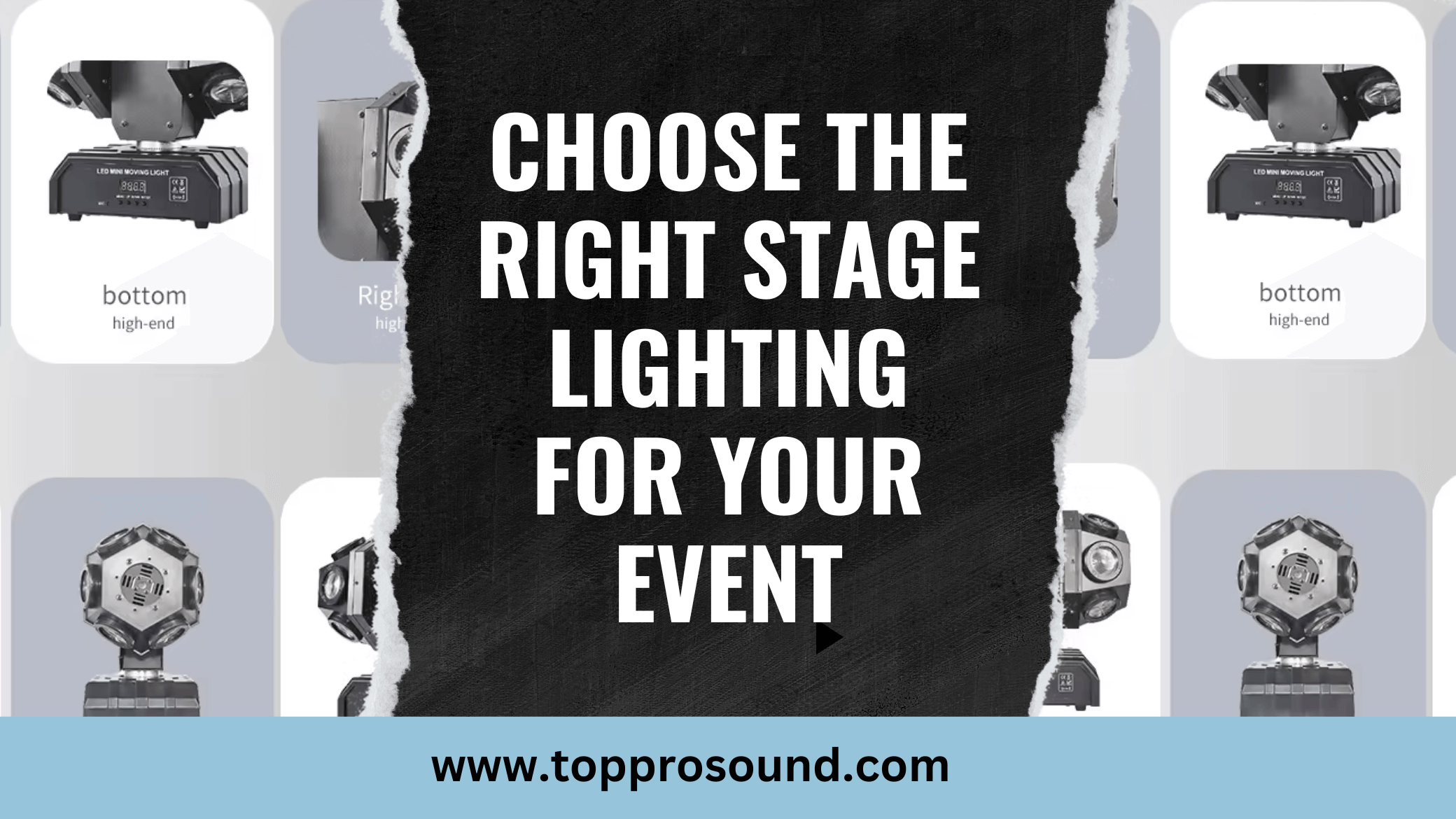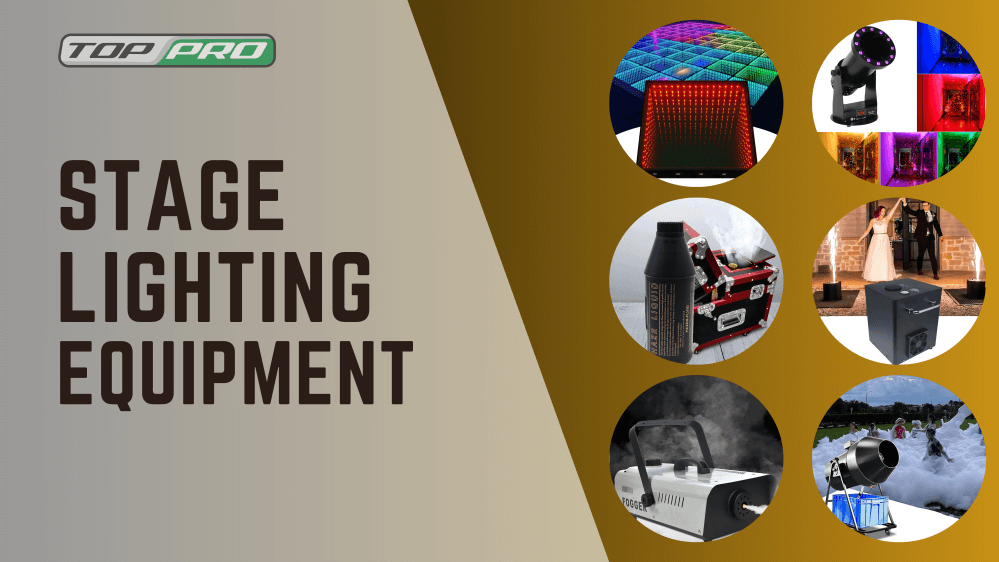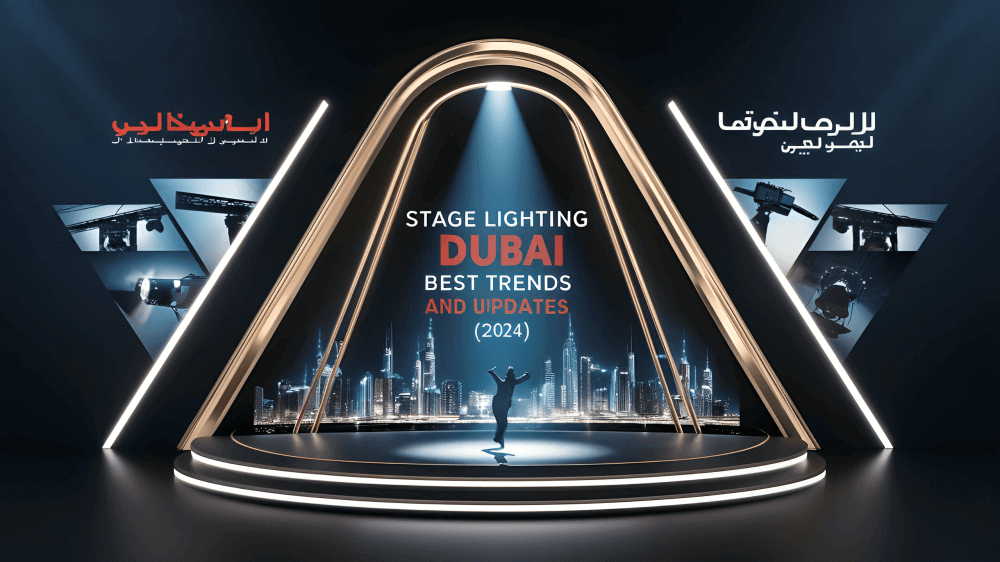How to Choose the Right Stage Lighting for Your Event

Choose the right stage lighting for your event can significantly impact the atmosphere and success of your performance. Whether you’re planning a concert, a corporate event, a theatrical production, or a wedding, understanding the key elements of stage lighting is essential. This comprehensive guide will walk you through choosing the proper stage lighting for your event, covering everything from understanding your needs to selecting the right equipment and ensuring safety and compliance.
Understanding Your Event Needs
Event Type and Scale
Different types of events have unique lighting requirements. Here are some examples:
Concerts require dynamic Lighting to enhance the energy and engage the audience. Moving headlights, strobes, and vibrant colours are commonly used to create an electrifying atmosphere.
Theatrical Productions: Focus on dramatic and precise Lighting to highlight actors and set the scene. Spotlights, gobos, and colour gels are essential to creating the desired mood and transitions between scenes.
Corporate Events: Professional and polished Lighting is needed to highlight speakers and presentations. Wash lights, dimming systems, and LED panels are typical choices to ensure clarity and focus.
Weddings: These events emphasize creating a romantic and elegant atmosphere. Soft Lighting, fairy lights, and uplighting are popular to enhance the venue’s aesthetics and create a warm, inviting environment.
Consider Your Venue
Indoor Venues often have more controlled lighting environments. To determine the best setup, consider ceiling height, power availability, and lighting infrastructure.
Outdoor Venues Require weather-resistant equipment and careful planning for power sources. Lighting should be adequate for daytime and nighttime settings, considering factors like ambient light and natural surroundings.
Remember about your Audience and Mood
The audience’s expectations and the desired mood of the event will guide your lighting choices:
Audience Size: Larger audiences may require more powerful Lighting to ensure visibility from all angles. The goal is to ensure everyone can see and enjoy the performance, regardless of where they are seated.
Desired Mood: The mood you want to create—intimate, energetic, or professional? —will influence the Lighting and colours you use. For example, a corporate event might use cooler, more professional tones. In contrast, a concert might use vibrant and dynamic Lighting to excite the audience.
Key Lighting Components
Understanding the different types of lighting fixtures is essential for creating the desired effects:
Moving Heads: These versatile fixtures can pan, tilt, and zoom to create dynamic effects. They are ideal for concerts and lively events where movement and energy are essential.
Wash Lights: These provide broad, even coverage to illuminate large areas of the stage. They are helpful for general Lighting and creating a base layer of illumination.
Spotlights: Focused beams used to highlight specific areas or performers. They are essential for theatrical productions and keynote speakers to draw attention to the focal points.
Strobes are high-intensity lights that flash at intervals to create dramatic effects. They are commonly used in concerts and dance events to add excitement and intensity.
LED Panels: These versatile and energy-efficient panels offer various colours and effects. They are suitable for multiple events, from corporate gatherings to weddings, and provide functional and decorative Lighting.
Choose your Best Control Systems
Modern lighting control systems offer precise management of lighting effects:
DMX Controllers are the standard for controlling stage lighting. They allow for the programming and synchronization of multiple fixtures to create complex lighting sequences.
Intelligent Control Systems: Advanced systems that enable real-time adjustments and integration with other stage elements like sound and video. This allows for seamless transitions and coordinated effects.
Wireless Controls: Offer flexibility and ease of setup, especially useful in complex or large-scale events. These systems reduce the need for extensive cabling, making setup faster and more efficient.
Choose the Best Accessories
Enhance your lighting setup with essential accessories:
Gobos are templates placed inside or in front of a light source to project patterns or shapes. They are great for adding texture and interest to your lighting design.
Colour Gels: Thin sheets of coloured material are placed in front of lights to change the colour output. This allows for easy customization of the lighting palette to match the event’s theme.
Diffusers: Soften the light output and reduce harsh shadows. These are particularly useful for creating a more flattering light for speakers or performers.
Practical Tips for Choosing Stage Lighting
Balancing quality and cost is crucial:
Initial Investment: Higher quality fixtures may have a higher upfront cost but offer better performance and longevity. Good equipment can save money in the long run through durability and lower maintenance costs.
Operational Costs: Consider energy consumption and maintenance. LED fixtures, for example, are energy-efficient and have lower long-term costs than traditional Lighting.
Planning Your Setup
Lighting Design: Create a detailed lighting design plan that outlines the placement and purpose of each fixture. This helps visualize the final setup and ensures all areas are adequately covered.
Power Requirements: Ensure you have an adequate power supply and distribution for all lighting equipment. Plan for the total power load and have backup solutions in place.
Setup Time: Allow sufficient setup, testing, and adjustments before the event. Rushing can lead to mistakes and overlooked details that could impact the event’s success.
Ensuring Safety and Compliance
Safety Regulations: Adhere to local safety standards and regulations, including electrical safety and load limits. This ensures the safety of both the crew and the audience.
Compliance Requirements: Ensure all equipment meets compliance standards for public events. This includes proper certification and inspection of all lighting fixtures and control systems.
Emergency Plans: Have contingency plans for power failures or equipment malfunctions. This includes having spare equipment and a trained team ready to handle emergencies.
Collaborating with Professionals and Experts
Working with experienced lighting designers and technicians can elevate your event:
Lighting Designers are experts in creating visually stunning and practical lighting plans tailored to your event. They can bring creative ideas and technical expertise to the table.
Technicians: Skilled in setting up, operating, and troubleshooting lighting equipment to ensure everything runs smoothly. Their experience can prevent potential issues and ensure a professional execution.
FAQ
1. What type of stage lighting is best for an outdoor event?
For outdoor events, you’ll need weather-resistant lighting equipment. Focus on powerful fixtures like waterproof LED wash lights and moving heads designed for outdoor use. Always plan for both daytime and nighttime lighting, considering ambient light and backup power sources.
2. How do I choose the right lighting for a small venue?
In small venues, less is often more. Use compact fixtures like LED panels and small spotlights to avoid overwhelming the space. Focus on creating mood and clarity without making the area feel cluttered. Adjustable lights with dimming options are very useful here.
3. Is it necessary to hire a professional lighting designer?
While smaller events can sometimes be managed independently, hiring a professional lighting designer is highly recommended for concerts, theatrical productions, or corporate events. Their expertise can elevate the overall experience, ensure technical issues are minimized, and create a more polished atmosphere.
4. How much time should I plan for setting up stage lighting?
Always allow more time than you think. For small setups, plan at least 4–6 hours for installation and testing. Larger or more complex events may require a full day or even several days, especially when integrating lighting with sound and video systems.
5. What is DMX control and why is it important?
DMX (Digital Multiplex) control is the standard protocol for managing stage lighting. It allows you to program, synchronize, and adjust multiple lighting fixtures through a central controller. Using DMX helps create smooth transitions, special effects, and a professional-quality lighting show.
Choosing the proper stage lighting for your event involves careful planning, understanding your needs, and selecting the appropriate equipment. By considering the type and scale of your event, the venue, audience expectations, and budget, you can create an unforgettable experience that captivates your audience. Whether you’re a seasoned professional or new to event planning, this guide provides the essential knowledge to make informed decisions and achieve stunning results.









